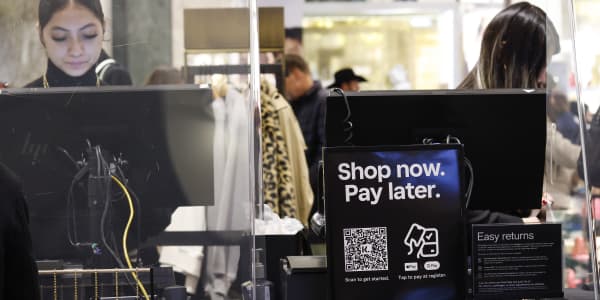Online sales growth is giving retailers a much-needed lift during an otherwise mixed holiday season — but it comes at a cost.
FedEx CEO Fred Smith told investors on an earnings call Tuesday that investments to meet record volumes took a bite out of its profit during the three months ended Nov. 30. That includes the five-day shopping stretch that started Thanksgiving, and ended with a record Cyber Monday.
To help the shipping company wrestle the costs from rising demand, which include building out its distribution network and adding more employees, FedEx said it cut ties with some of its customers who couldn't agree to its pricing and capacity requirements.
The comments came just days ahead of pending rate hikes from FedEx and UPS, highlighting the double-edge sword that retailers face when it comes to growing their digital business.
Not only are they saddled with rising expenses to send out orders and process returns, they often eat the cost of pricier shipping methods to grab shoppers' spending later in the season. Nike is just one retailer that was offering free expedited shipping ahead of the holidays. While they're trying to offset these costs with in-store pickup capabilities, the staffing and technology required for those services can make it pricey, too.
"The cost of e-commerce is weighing heavily on most retailers [profit and loss statements]," Stifel analyst Richard Jaffe told investors. "Despite the expense and possible cannibalization, retailers must participate or risk losing share to competitors."
Indeed, with online sales driving much of the gains this season, sitting on the sidelines would be detrimental to most retailers.
According to Cowen and Co., which analyzed data from ShopperTrak, foot traffic decelerated during the week that ended Super Saturday. That day is the final full shopping Saturday before Christmas, and was expected to be one of the busiest days of the season.

Meanwhile, a separate report from Verizon Enterprise Solutions said the same weekend pulled in the season's highest online traffic volumes. Verizon's index tracks daily traffic for the top 25 U.S.-based online retailers.
And data from Adobe Digital Insights showed that online sales grew at a higher-than-anticipated rate from Friday through Tuesday, as consumers waited later in the season to do their online shopping. From Nov. 1 through Dec. 20, online sales rose nearly 11 percent — in line with the firm's full-season forecast. Adobe measures 80 percent of all online transactions from the top 100 U.S. retailers.
"We expect the holiday season will come in at our predicted $91.6 billion," Tamara Gaffney, principal analyst and director at Adobe Digital Insights, said in a statement. "However, if we continue to see higher-than-expected growth, it may surpass our prediction."
Trends at physical stores, which account for the lion's share of retail sales, have been more mixed. After a reasonably solid Black Friday week, several analysts have reported a larger midseason lull than what is typical.
Data from The NPD Group backs up that thesis. Information it pulled from retailers' in-store and online registers showed that dollar sales declined 5 percent in the week ended Dec. 10 as compared with the prior year.
According to the latest results from FirstData, which pulled information from nearly 1 million merchants' registers, retail spending was up 2 percent during the 45 days that ended Dec. 12. That includes 9 percent growth online, and a more muted 0.1 percent uptick at bricks-and-mortar.
"The annual post-Black Friday shopping lull was even more pronounced this year," Retail Metrics President Ken Perkins said. "Super Saturday weekend needed to be a blowout to make up for declining foot traffic the previous three weeks. Unfortunately from our store visits, it appeared to be anything but."
Aggressive discounts and promotions are making it even more difficult for retailers to grow their sales, as they have to ring up more merchandise to generate gains.
Despite the season's choppiness, several analysts still expect sales to register modest gains. They argue that retailers should be helped by more seasonal weather, leaner inventories, pent-up demand and a healthier economy. The National Retail Federation predicts that sales will increase 3.6 percent in November and December.
And with Christmas falling on a Sunday this year, last-minute shoppers still have time to hit the stores.
"The bitter cold that blanketed the U.S. over the past week hurt consumers' ability to shop, which means more is riding on the current week as holiday shopping wraps up," Michael Niemira, chief economist of the The Retail Economist, said in a statement.




